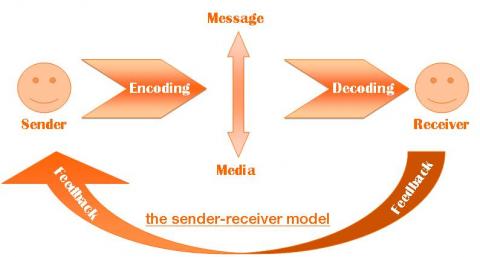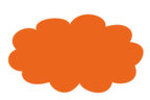
Carlos Jordan de Urries (left) and Chrystel Bazin (below), senior consultants at Sofrecom (a France Telecom Company) have updated us on the status of Social Media in emerging markets last Monday in Cairo. In this presentation, we'll focus less on international Social media platforms and more on what the motivations are for people to follow - or not follow - brands like Coca Cola for instance.

aim of the study
The aim of this study was not to be comprehensive either. What Sofrecom have wanted to do is to highlight the main trends in social media in emerging countries. Chrystel started with a little sketch (right) defining a "social" network showing how (virtual) networks of people can be intertwined. With user generated content (UGC), content gets published online, and even though you are not a media, there are many chances that some people are going to see your content; your contacts will see it and then your contacts' contacts etc.
She then replaced Social networks within the slightly larger framework of "social media" (which I had covered before in my presentation). There are different types of tools within Social Media, from blogs to microblogs and wikis and, eventually social networks proper. There are 2 types of social media platforms which make up a first axis: content centric such as youtube of Flickr, and communications centric such as Facebook, Orkut etc. The two are sort of joined at the hip though because they are both about content, but the approach is radically different. Then there are 3 more types on the second axis: collaborative such as wikipedia, community orientated or deal oriented (crowdsourcing, social e-commerce for the latter catregory). Eventually, Chrystel showed us that completed matrix showing how all these tools can be spread out across this two axes (above, click to enlarge).
Twitter is an issue because it can't really be squeezed into the "social network" box as it is more of a tool than a social network. As to crowdsourcing, there are sites like e-Stockphoto which is reshaping the photo market, as a lot of media are using them now vs. traditional agencies (we could have added fotolia, here's a link to my page as an example).
Main trends in local services
Different countries have been investigated, it is not meant to be comprehensive though. Commercial Services and Crowdfunding have been zoomed in in the rest of Christelle's presentation.
- Watwet (note: the server was down when I tried it, so here is the cached version) is microblogging focused on Arab populations, it's open, whatever country you are from. Zoopy is like youtube or Flickr. The service was launched in South Africa. Now we can see that some of the videos are coming from other English-speaking countries. They are both open solutions.
- Facebook is not providing any specific value to local countries in these regions. Veepiz for is just like that. They are using the Facebook platform but provide a local service based on top of Facebook and let users be on their own environment. They do that with Twitter as well so that users have the best of both worlds. It's coopetition. Veepiz integrates other social networks but provides local value.
- FrontlineSMS: many services, blogs etc. in Africa are becoming social. FrontlineSMS is a Yammer-like two-way SMS platform which has developed its activity for NGOs. They have created a community. The platform helps NGO employees communicate amongst themselves. The platform is free for NGOs.
- Crowdsourcing: this is about making the user at the centre of the service. It's up to the user to decide whether he wants to collaborate. The idea is not to just let people complain about the service but to let them be part of the improvement of that service. There are 4 domains to which crowdsourcing applies: knowledge sharing, task force, real time information and funding
- Kiva is well known and is about micro funding. People go to the web and fund a project. You don't win anything apart from the pride of being part of something.
- txteagle is a task force example
- iYammobi and Kerawa are examples of knowledge sharing. Kerawa is about small ads; say if you are looking for a flat in Cameroon. It's working in most sub-saharian countries and enjoying good success in that region.
- Ushahidi is a sample real time information example: it was used in Haiti after the quake to map needs for medicine and or in Atlanta to inform people about robberies being committed
For small ads, in emerging countries and namely in Sub Saharian regions, ebay cannot provide the right kind of service whereas Kerawa can. There are still many opportunities in the Middle East and Africa for services like this to be provided for local people.
Facts and figures
there are sites on which one can find interesting data about Middle East social media usage:
- Google Ad planner is the first one
- Facebook advertising is another one (Facebook provides detailed numbers about users registered in the system)

I specialize in information systems, HighTech marketing and Web marketing. I am author and contributor to numerous books and the CEO of Visionary Marketing. As such, I contribute regularly on this blog for Orange Business account on cloud computing and cloud storage topics.